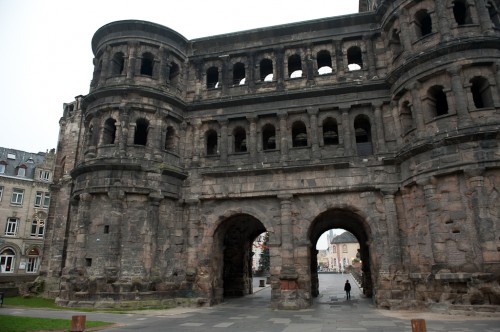Some gate! Porta Nigra is the largest Roman city gate north of the Alps. The name originated in the Middle Ages for the dark color of its grey sandstone, which has been further darkened by exhaust fumes and general air pollution over the years.
The gate was constructed between 186 and 200 A.D as one of four protective city gates stationed. This is the only remaining one. The original structure consisted of two four-storied towers separated by a courtyard. For unknown reasons, construction was never completed, but the gate was used until the end of the Roman era. When the gates fell into disuse, their stones were taken out and used for other buildings. Iron and lead braces were broken out of the Porta Nigra for reuse.
In 1028, the Greek monk Simeon moved into the ruins. After his death in 1035, the Porta Nigra was transformed into a church. A full renovation was done: the inner court was roofed, ceilings were installed, naves were added and a large exterior staircase was installed. Then, in 1802 Napoleon Bonaparte dissolved the church, along with many others in Trier, and ordered restoration to its original Roman structure, which is the Porta Nigra you see today.

No comments yet.